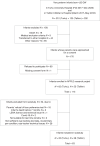Exposure to the parents' speech is positively associated with preterm infant's face preference
- PMID: 38783114
- PMCID: PMC11772228
- DOI: 10.1038/s41390-024-03239-8
Exposure to the parents' speech is positively associated with preterm infant's face preference
Abstract
Background: The parents' presence and involvement in neonatal care is a promising approach to improve preterm infants' neurodevelopmental outcomes. We examined whether exposure to the parents' speech is associated with the preterm infant's social-cognitive development.
Methods: The study included infants born before 32 gestational weeks in two neonatal units. Each infant's language environment was assessed from 16-hour recordings using Language Environment Analysis (LENA®). Parental presence was assessed with Closeness Diary for 14 days during the hospital stay. Attention to faces and non-face patterns was measured at the corrected age of seven months using an eye-tracking disengagement test.
Results: A total of 63 preterm infants were included. Infants were less likely to disengage their attention from faces (M = 0.55, SD = 0.26) than non-face patterns (M = 0.24, SD = 0.22), p < 0.001, d = 0.84. Exposure to the parents' speech during the neonatal period was positively correlated with the preference for faces over non-face patterns (rs = 0.34, p = 0.009) and with the preference for parents over unfamiliar faces (rs = 0.28, p = 0.034).
Conclusion: The exposure to the parents' speech during neonatal hospital care is a potential early marker for later social development in preterm infants.
Impact: The exposure to the parents' speech during neonatal intensive care is a potential early marker for optimal social-cognitive development in preterm infants. This is the first study to show an association between parental vocal contact during neonatal intensive care and early social development (i.e., face preference), measured at seven months of corrected age. Our findings suggest that we should pay attention to the parents' vocal contact with their child in the neonatal intensive care unit and identify need for tailored support for face-to-face and vocal contact.
© 2024. The Author(s).
Conflict of interest statement
Competing interests: The authors declare no competing interests. Informed consent: The families got verbal and written information about the study. If they were willing to participate, they signed an informed consent form.
Figures



References
-
- Agrawal, S., Rao, S. C., Bulsara, M. K. & Patole, S. K. Prevalence of autism spectrum disorder in preterm infants: a meta-analysis. Pediatrics142, e20180134 (2018). - PubMed
-
- van Noort-van der Spek, I. L., Franken, M.-C. J. P. & Weisglas-Kuperus, N. Language functions in preterm-born children: a systematic review and meta-analysis. Pediatrics129, 745–754 (2012). - PubMed
-
- Kooiker, M. J. G., Swarte, R. M. C., Smit, L. S. & Reiss, I. K. M. Perinatal risk factors for visuospatial attention and processing dysfunctions at 1 year of age in children born between 26 and 32 weeks. Early Hum. Dev.130, 71–79 (2019). - PubMed
MeSH terms
LinkOut - more resources
Full Text Sources
Medical

